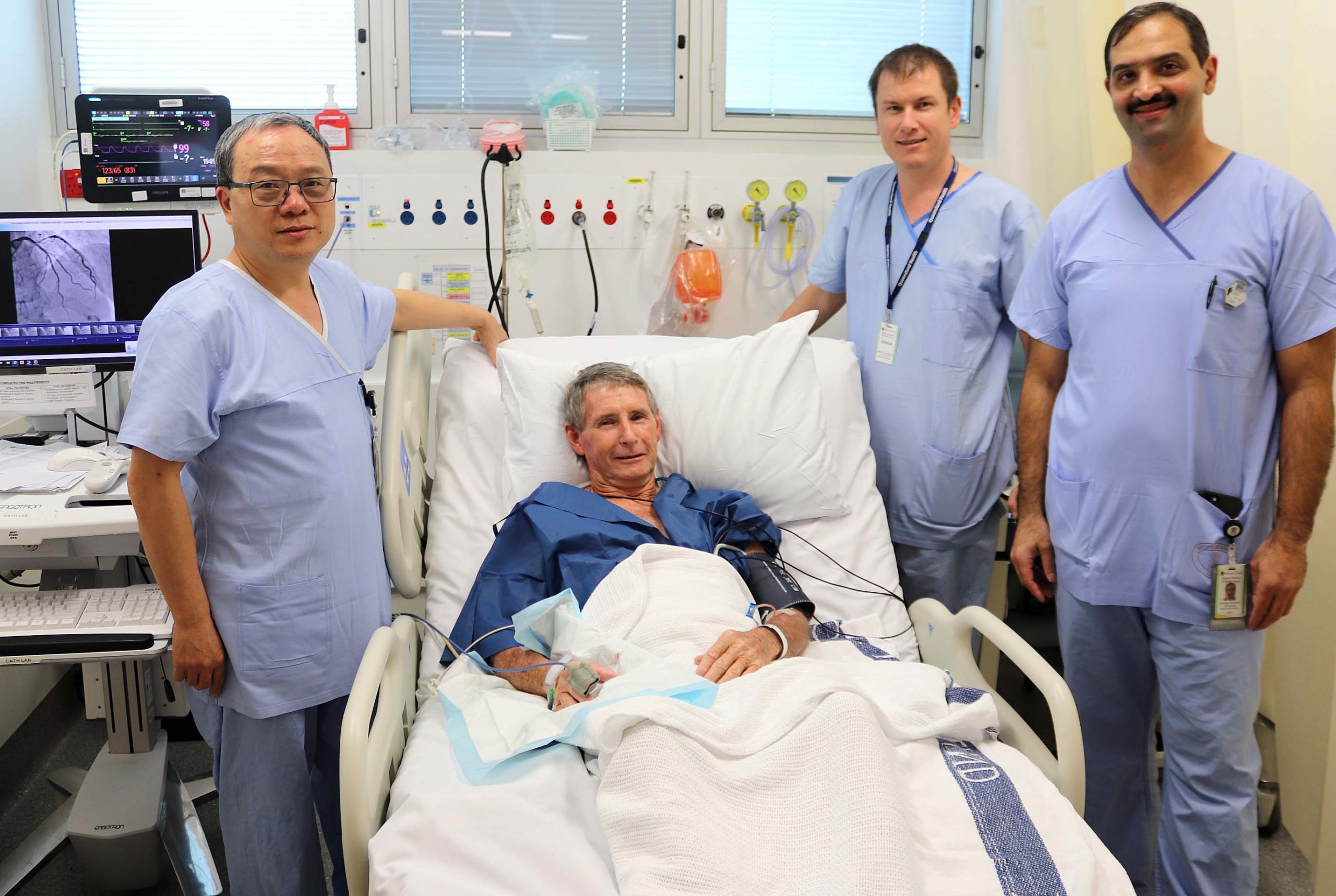A new life-saving procedure to open blocked calcified arteries has been performed in Mackay for the first time at the Base Hospital.
Director of Cardiology Dr Michael Zhang said the rotablation involved using a tiny diamond tipped burr to drill into the calcium of the blocked artery to restore the blood flow in the heart.
The procedure is for patients with significant blockages who cannot be helped with conventional angioplasty using a balloon to open the blockage.
“For patients with a heavily calcified blockage we can now drill into this calcium first before we can then do a balloon and then stent to keep the artery open,” Dr Zhang said.
“For some blockages we only have to drill for about 30 seconds in total, and for others it’s more than three minutes.
“This is very mature technology and we are able to start the program thanks to support from The Prince Charles Hospital and from the Mackay Hospital and Health Service,” he said.
Previously patients needing this procedure were either treated with medication or transferred to Townsville or Brisbane.
Up to 40 patients a year will benefit from the new service.
“Offering the locally means less inconvenience for patients and their families, and it also reduces costs for the public healthcare system too,” Dr Zhang said.
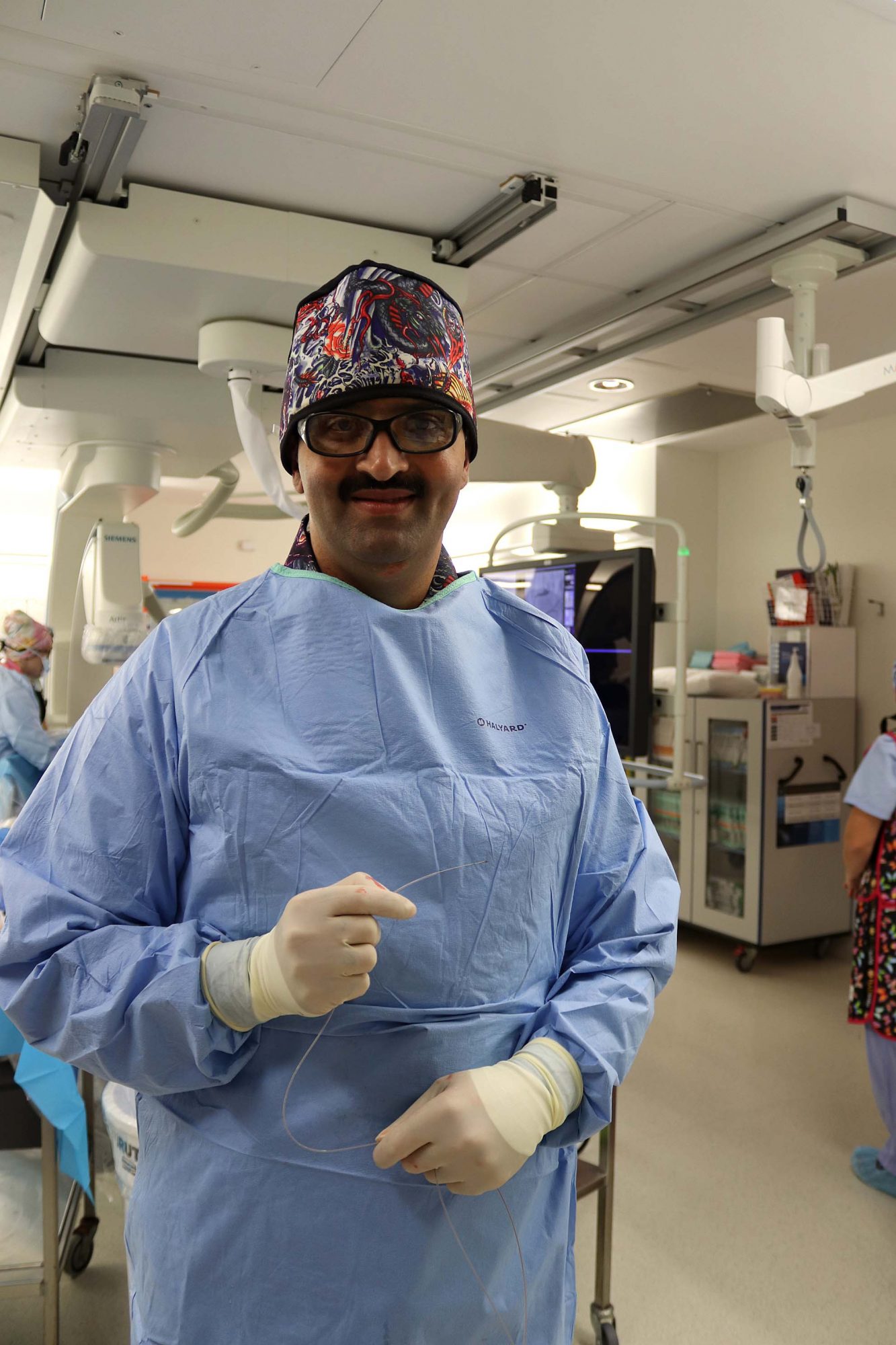
The rotablation takes one and a half to two hours, depending on the complexity of the case.
“Today is a really significant one for the Mackay Base Hospital and for the community to know this life-saving treatment is available closer to home,” Dr Zhang said.
“It’s also significant for the doctors who are performing the intervention it is a step up in skills and it makes us happy we can treat our patients locally.”
The first three procedures were performed with mentoring support from Dr Rustem Dautov from The Prince Charles Hospital and technical support from provider Boston Scientific.
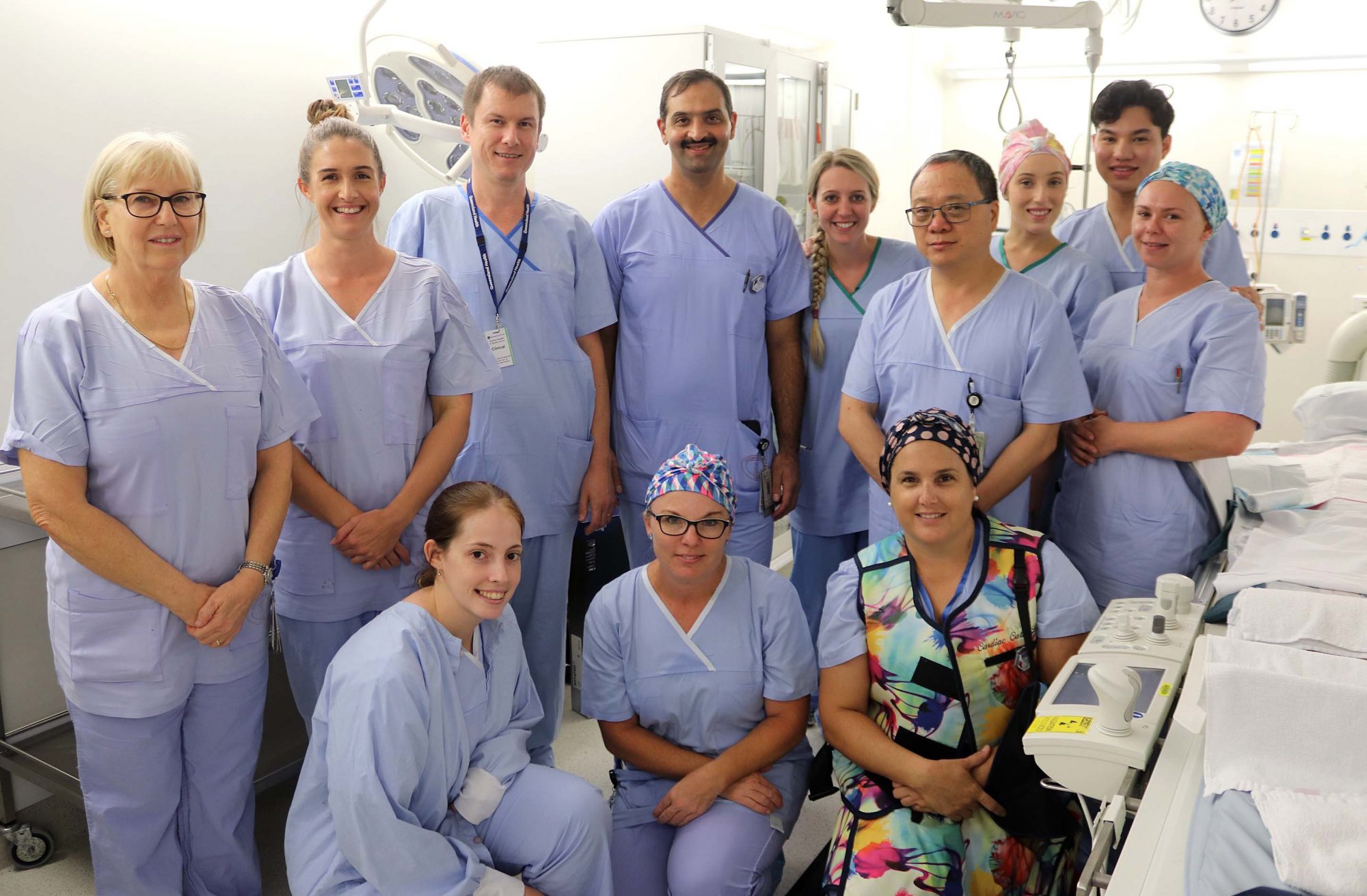
“I would also like to congratulate fellow operator Dr Muntaser Musameh and the nursing team led Anna Townsend, the CCU nursing team, cardiac scientists Valerie Segadore and Janine Thorasen and radiographer Caitlin Johnson.”
The project was initiated by Dr Muntaser Musameh and Dr Shanti Vaidya and supported by Dr Michael Zhang.
How it works
- A long, thin catheter is inserted into an artery in the groin or wrist and is and is moved inside of the artery until it reaches the heart.
- When the catheter is in place a small amount of dye is injected and can be seen travelling through the arteries on xray.
- These pictures show where the blockage is and guide the cardiologist performing the procedure.
- The ROTAPRO Rotational Atherectomy System has a burr that can range in size from 1.25mm to 2mm wide.
- It travels to the blockage on a thin wire and the cardiologist can control the movement and speed. The calcium is dissolved into microscopic pieces.
- A balloon is then inserted to ensure the artery is open and a stent (mesh tube) is placed to keep the artery wall open.
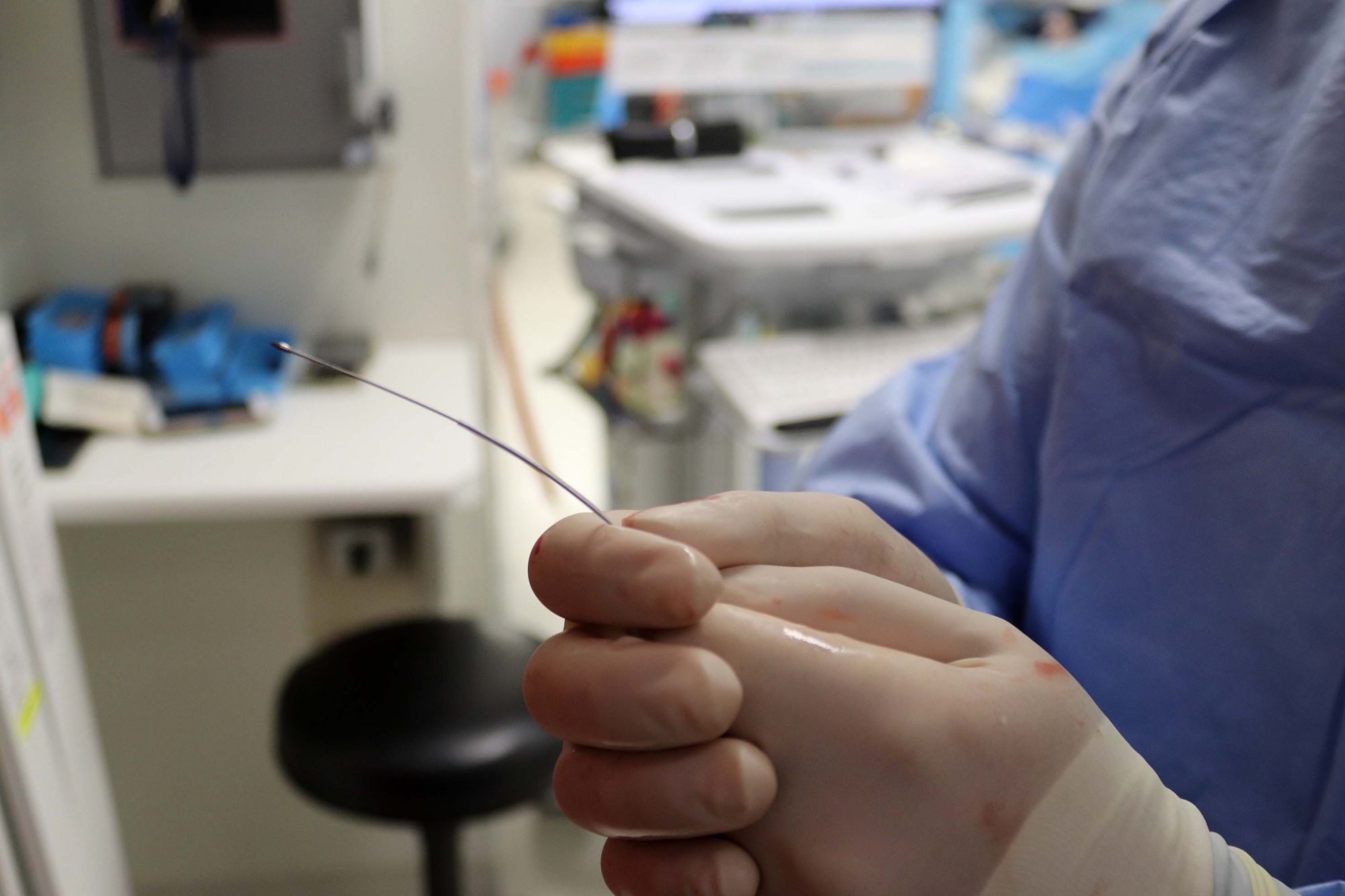
Positive patient experience
Peter Quinn, 75, is the first in Mackay to benefit from the new rotablation technique.
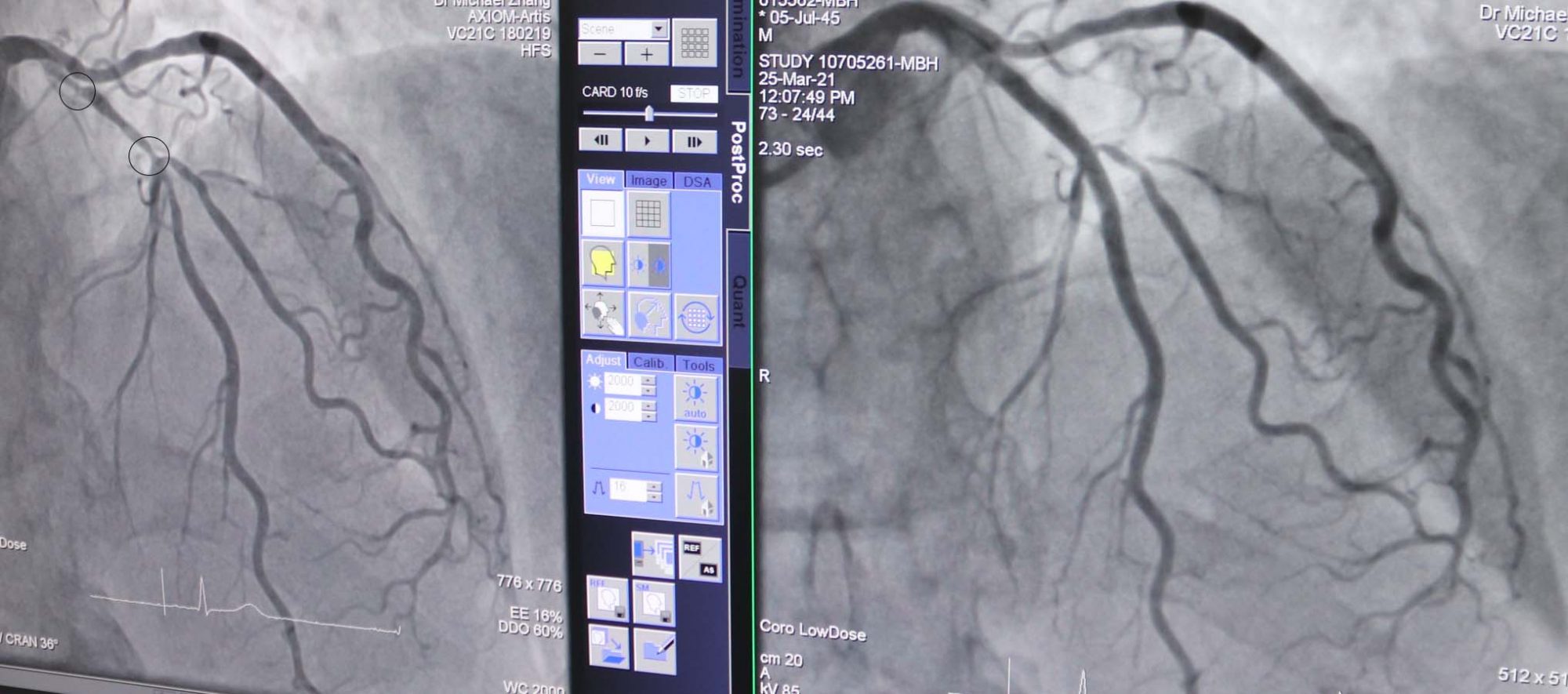
His complex blockage required several minutes of drilling to clear with dramatic before and after images showing the return of blood flow.
Mr Quinn said a burning sensation in his chest and some shortness of breath when he cycled was the only indication of his heart blockage late last year.
“They did try to do the traditional angioplasty but decided it would be best to start some medication and wait for this new procedure,” he said.
The semi-retired business owner said it made a big difference to him and his wife to have the procedure done locally.
Mr Quinn will return for the same procedure on another artery and says it’s too soon to say he’s feeling like a new man.
“I’ve seen the pictures and it looks like it’s done the job they were wanting to do. I can’t speak highly enough of the team here.”
Mr Quinn is looking forward to returning to bike rides with his grandchildren and urges anyone with any suspicion they have heart troubles to see their GP immediately.



